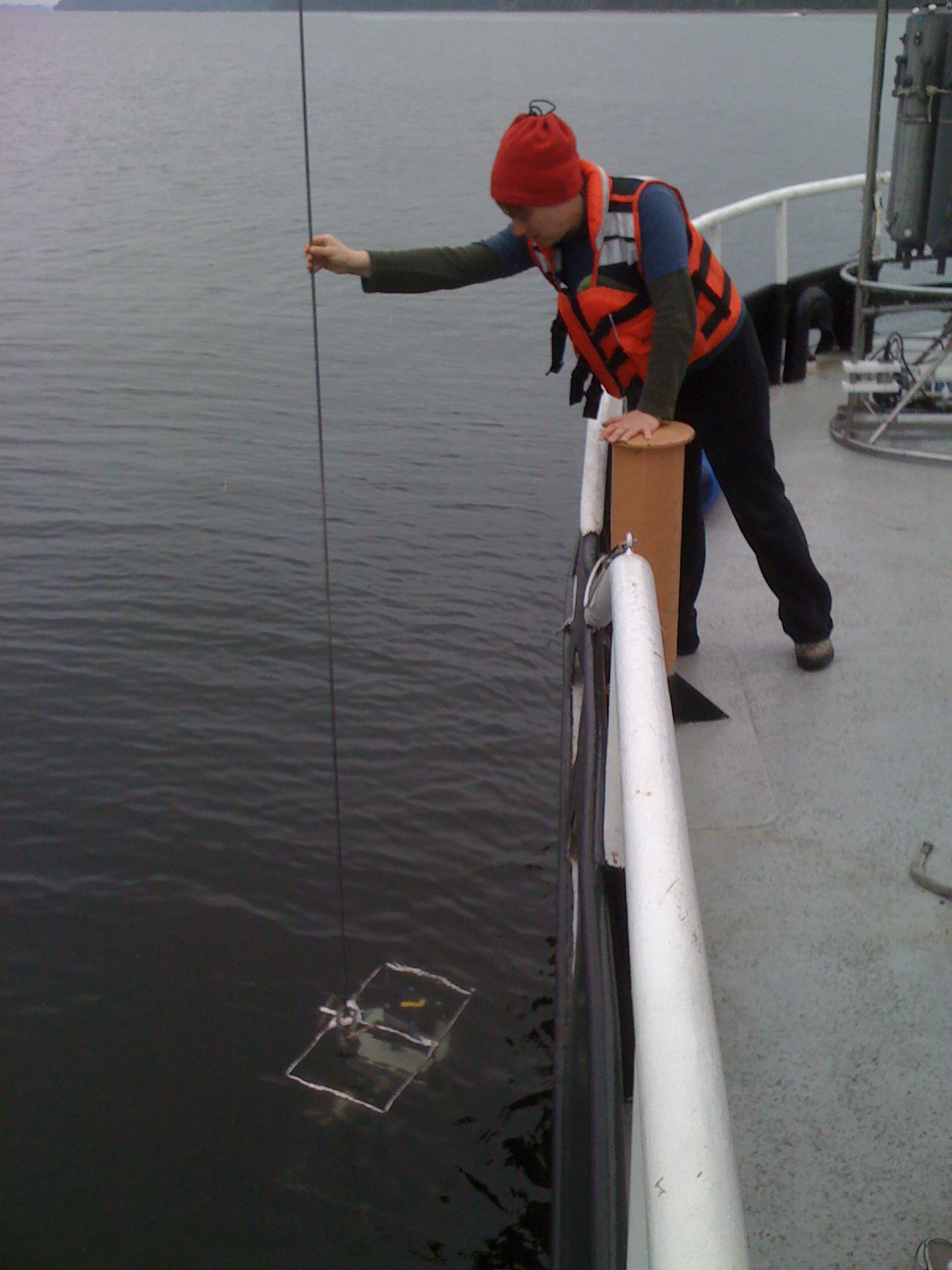Small Organism May Play A Big Role In Global Nitrogen Cycles

By Sonia Albin and Kate Stoll
Researchers are known for going where no one else dares, to find specimens that will change science as we know it: miles underground, the deep sea, and even space. But who would have thought to look in the gravel on the bottom of a Seattle Aquarium tank?
While studying microorganisms five years ago, University of Washington researchers plunged into a tank at the Seattle Aquarium and uncovered a miniature organism that survives by breathing oxygen and eating nitrogen. Their more recent work, published in the journal Nature, suggests that these tiny organisms convert nitrogen more efficiently than anything yet discovered, and because they are also abundant in the open ocean they may play a considerable role in the global nitrogen cycle.
These microbes come from a lineage named archaea, which can live in very extreme habitats, such as hot springs and the deep sea. The Seattle Aquarium does not necessarily fall under an "extreme" habitat, but the tank has extremely low levels of ammonium ion, the positively charged form of ammonia. In fact, it is these archaea that are responsible for keeping the ammonium levels so low. When fish are confined to tanks, the ammonium from their excrement can build up, but thanks to the archaea, the toxic ammonium is quickly converted to nitrite, which can then be converted to less toxic nitrate. The same thing is likely happening in the ocean; these special archaea are keeping the ammonium levels low.
 |  |
Much of the world's nitrogen cycle occurs in the ocean. These archaea may play a much larger role in the global nitrogen cycle than scientists ever imagined and are much more abundant and widespread than previously thought. Nitrogen in the air is inert and can't be used by most living creatures, but specialized nitrogen-fixing phytoplankton in the ocean incorporate atmospheric nitrogen into their cells if starved for ammonium or nitrate. Yet, in the course of days to weeks the plankton die, releasing all fixed nitrogen as ammonium; perfect food for ammonium-eating bacteria and archaea. Thus, just like in a healthy fish tank, ammonium never accumulates, but it is the nitrate which remains stable over long periods of time until phytoplankon assimilate it again.
Researchers have known about ammonium-eating bacteria since the late 19th century, but in the early 1990s they discovered another organism that seemed to do the same thing: eat ammonium. The bacteria and the newly discovered archaea have the same enzyme to break down ammonium, but not much else in common. The enzyme is the "needle in the haystack" that links the bacteria and this archaea, says UW postdoctoral researcher Willm Martens-Habbena. Present nitrogen cycle models include the contribution of the ammonium-eating bacteria, but not the ammonium-eating archaea. It is not until now that scientists have begun to appreciate the significance of including these archaea in the nitrogen cycle equations.
One of the most striking differences between the two groups of ammonium-eaters, says UW professor and lead investigator David Stahl, is the fact that the bacteria need a greater quantity of the molecule. The archaea only require the equivalent of a teaspoon of ammonium salt in 10 million gallons of water to satisfy their requirements, 10 to 100 times less than the bacteria would need to survive. This means that the archaea are predominantly responsible for keeping ocean ammonium levels very low. The fact that the archaea are much more efficient than the bacteria at converting ammonium, and the fact that the archaea were not previously accounted for in nitrogen cycle models, suggests that calculations may be wrong about the amount of ammonium that gets turned into nitrate and ultimately atmospheric nitrogen, says Martens-Habbena.
Since global carbon and nitrogen cycles are closely linked, if calculations are wrong about the nitrogen cycle, then the same could be true about the carbon cycle. Therefore, understanding the role of these archaea will significantly benefit global warming models.
The National Science Foundation grant responsible for funding this study is on its seventh year out of ten. Despite its long run, the research is still in its early stages, according to Stahl and Martens-Habbena. While they have managed to isolate and differentiate the ammonium-eating archaea from the ammonium-eating bacteria, further characterization of these important microbes need to be completed. Furthermore, it is still unknown what sort of practical use these organisms may have. Because they are sensitive to very small concentrations of ammonium, they may be relevant to improved sustainable agriculture practices and as final purifiers for drinking water.
Stahl and Martens-Habbena seem most excited about the mechanisms that this organism uses to survive. They hope to learn more about it in the future through the use of genetic techniques in order to fully understand how this small organism can play such a big role in global nitrogen cycling.
Sonia Albin is an undergraduate pursuing a double degree in aquatic and fisheries science and European studies at the University of Washington.
Kate Stoll is a graduate student studying biochemistry at the University of Washington.
Images
Top: UW researchers sample the deep waters of Hood Canal. Photo: Willm Martens-Habbena
Bottom: The nitrogen cycle in an aquarium relies on ammonium-eating archaea and bacteria to convert toxic ammonium to nitrites. Image: Ilmari Karonen wikipedia.com

|